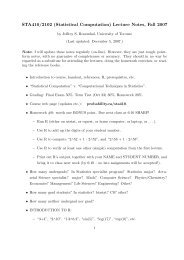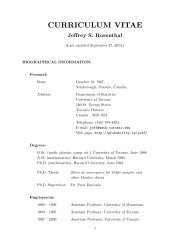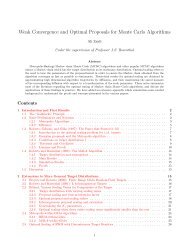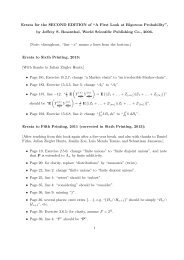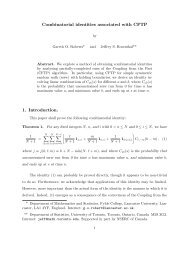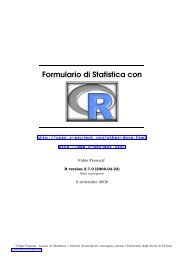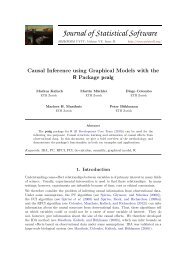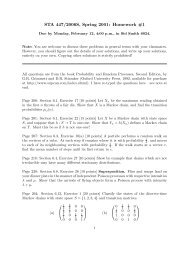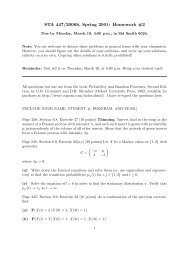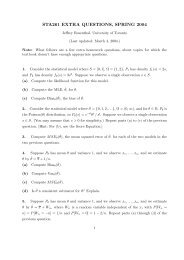Package 'extRemes' - What are R and CRAN?
Package 'extRemes' - What are R and CRAN?
Package 'extRemes' - What are R and CRAN?
Create successful ePaper yourself
Turn your PDF publications into a flip-book with our unique Google optimized e-Paper software.
44 fevd<br />
Schwarz, G. E. (1978). Estimating the dimension of a model. Annals of Statistics, 6, 461–464.<br />
Smith, R. L. <strong>and</strong> Shively, T. S. (1995). A point process approach to modeling trends in tropospheric<br />
ozone. Atmospheric Environment, 29, 3489–3499.<br />
von Mises, R. (1936). La distribution de la plus gr<strong>and</strong>e de n valeurs, Rev. Math. Union Interbalcanique<br />
1, 141–160.<br />
See Also<br />
ci.fevd for obtaining parameter <strong>and</strong> return level confidence intervals.<br />
distill.fevd for stripping out a vector of parameter estimates <strong>and</strong> perhaps other pertinent information<br />
from an fevd object.<br />
For functions to find the density, probability df, quantiles <strong>and</strong> simulate data from, an EV df, see:<br />
devd, pevd, qevd, revd<br />
For functions to find the probability df <strong>and</strong> simulate r<strong>and</strong>om data from a fitted model from fevd,<br />
see: pextRemes, rextRemes<br />
For functions to determine if the extreme data <strong>are</strong> independent or not, see: extremalindex, atdf<br />
For functions to help choose a threshold, see: threshrange.plot, mrlplot<br />
To decluster stationary dependent extremes, see: decluster<br />
For more on formulas in R, see: formula<br />
To grab the parameters of a fitted fevd model, see: findpars<br />
To calculate the parameter covariance, see: optimHess, parcov.fevd<br />
To see more about the extRemes method functions described here, see: ci <strong>and</strong> distill<br />
To calculate effective return levels <strong>and</strong> CI’s for MLE <strong>and</strong> Bayesian estimation of non-stationary<br />
models, see ci.rl.ns.fevd.bayesian, ci.rl.ns.fevd.mle <strong>and</strong> return.level<br />
To obtain the original data set from a fitted fevd object, use: datagrabber<br />
To calculate the profile likelihood, see: profliker<br />
To test the statistical significance of nested models with additional parameters, see: lr.test<br />
To find effective return levels for non-stationary models, see: erlevd<br />
To determine if an fevd object is stationary or not, use: is.fixedfevd <strong>and</strong> check.constant<br />
For more about the plots created for fevd fitted objects, see: ppoints, density, hist, qqplot<br />
For general numerical optimization in R, see: optim<br />
Examples<br />
z



